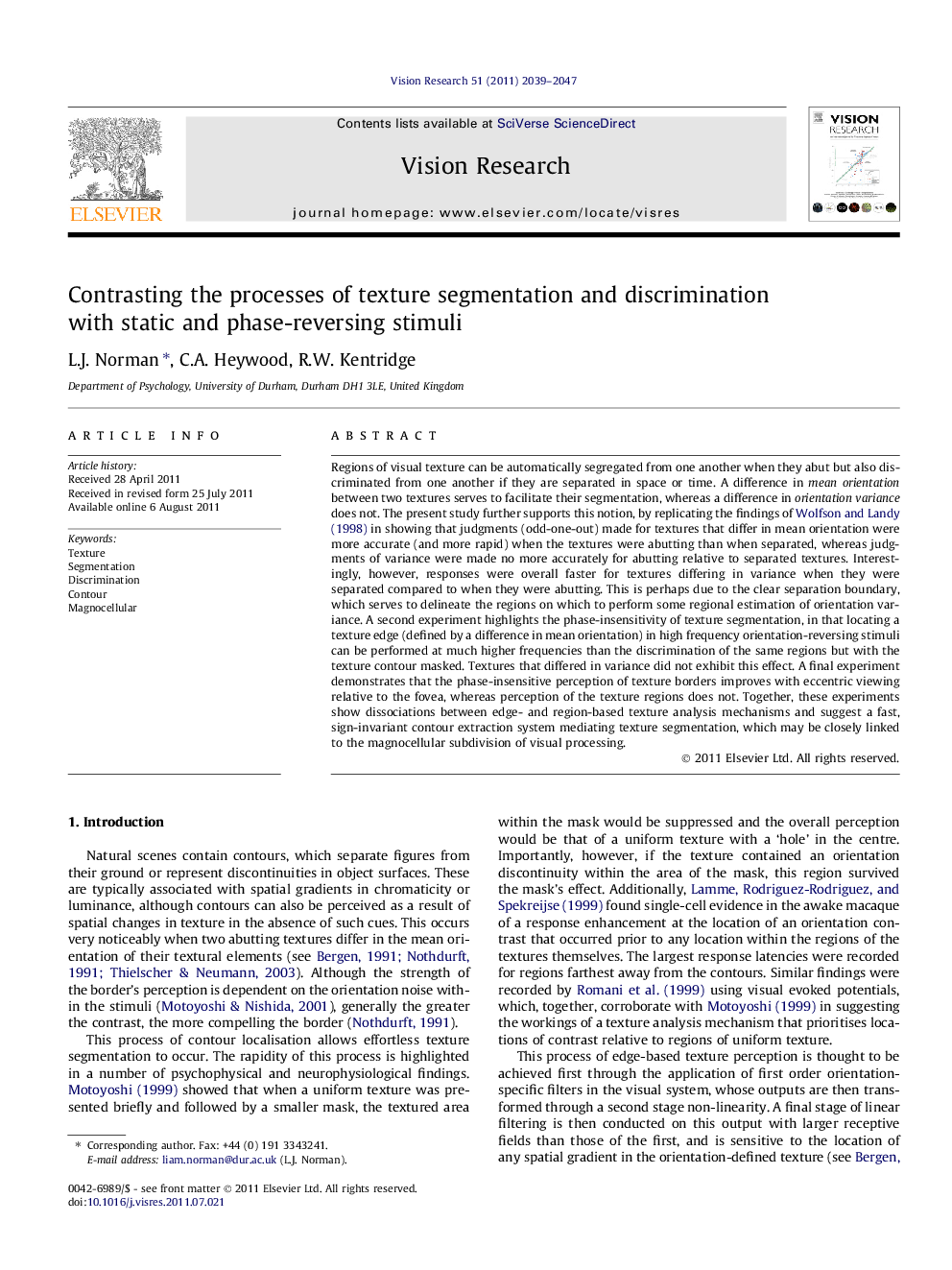| Article ID | Journal | Published Year | Pages | File Type |
|---|---|---|---|---|
| 4034259 | Vision Research | 2011 | 9 Pages |
Regions of visual texture can be automatically segregated from one another when they abut but also discriminated from one another if they are separated in space or time. A difference in mean orientation between two textures serves to facilitate their segmentation, whereas a difference in orientation variance does not. The present study further supports this notion, by replicating the findings of Wolfson and Landy (1998) in showing that judgments (odd-one-out) made for textures that differ in mean orientation were more accurate (and more rapid) when the textures were abutting than when separated, whereas judgments of variance were made no more accurately for abutting relative to separated textures. Interestingly, however, responses were overall faster for textures differing in variance when they were separated compared to when they were abutting. This is perhaps due to the clear separation boundary, which serves to delineate the regions on which to perform some regional estimation of orientation variance. A second experiment highlights the phase-insensitivity of texture segmentation, in that locating a texture edge (defined by a difference in mean orientation) in high frequency orientation-reversing stimuli can be performed at much higher frequencies than the discrimination of the same regions but with the texture contour masked. Textures that differed in variance did not exhibit this effect. A final experiment demonstrates that the phase-insensitive perception of texture borders improves with eccentric viewing relative to the fovea, whereas perception of the texture regions does not. Together, these experiments show dissociations between edge- and region-based texture analysis mechanisms and suggest a fast, sign-invariant contour extraction system mediating texture segmentation, which may be closely linked to the magnocellular subdivision of visual processing.
► Segmenting visual textures does not require their discrimination (i.e. it is phase-insensitive). ► Texture segmentation, and not discrimination, is more readily perceived outside the fovea. ► The neural mechanism of phase-insensitive texture segmentation is likely to be magnocellular. ► Orientation variance discrimination is not phase-insensitive. ► Orientation variance discrimination is more rapid for separated relative to abutting textures.
